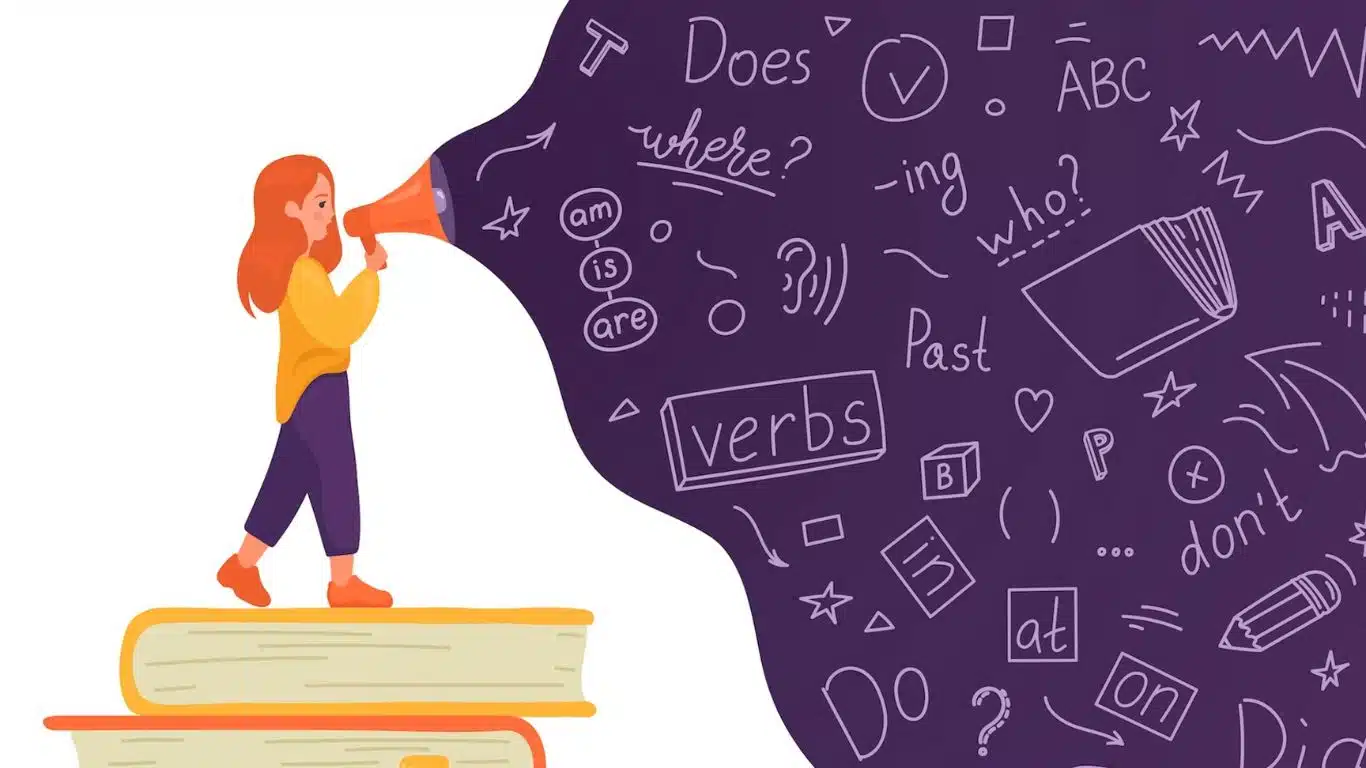In today’s complex and rapidly evolving world, understanding and supporting individuals with learning disabilities is crucial for promoting inclusive education and fostering personal growth. This article delves into the various types of Learning Disabilities and ways to address them effectively. By raising awareness about the challenges faced by those with learning disabilities, we aim to equip educators, parents, and communities with the knowledge and tools to provide a supportive and tailored learning environment.
Types of Learning Disabilities and Ways to Address Them
Dyslexia
Learning disabilities are neurological differences that affect how an individual processes information. Dyslexia is a common learning disability that impacts an individual’s ability to read, write, and spell accurately. In this brief overview, we will discuss dyslexia and some effective strategies to address it.
Dyslexia is characterized by difficulties with phonological processing, which affects the ability to recognize and decode written words. This can lead to problems with reading fluency, comprehension, spelling, and writing. Although dyslexia varies in severity, it is not related to intelligence; many individuals with dyslexia possess average or above-average intelligence.

To address dyslexia, early identification and intervention are crucial. Multisensory structured language education (MSLE) has proven to be an effective approach for teaching individuals with dyslexia. MSLE uses visual, auditory, kinesthetic, and tactile methods to help students understand the structure of language and develop decoding skills.
Additionally, teachers can implement accommodations and modifications to support students with dyslexia. These may include providing extra time on exams, offering clear and concise instructions, using assistive technology (such as text-to-speech or speech-to-text software), and incorporating graphic organizers to help with comprehension.
Parents and educators should collaborate to create a supportive learning environment tailored to the unique needs of each individual with dyslexia. Encouraging open communication and celebrating small successes can help boost self-confidence and foster a growth mindset.
Dysgraphia
Dysgraphia is a learning disability that primarily affects an individual’s writing ability, making it challenging to express thoughts in written form. It can manifest as difficulties with spelling, handwriting, and organizing ideas coherently. There are three main types of dysgraphia: motor, spatial, and linguistic.
- Motor Dysgraphia: This type is characterized by poor fine motor skills, resulting in illegible handwriting, inconsistent letter formation, and slow writing speed. To address motor dysgraphia, occupational therapy can be employed to improve fine motor skills, while assistive technology, such as speech-to-text software, can help students express their thoughts without the need for handwriting.
- Spatial Dysgraphia: Individuals with spatial dysgraphia struggle with spatial awareness and organizing written content on the page. Tools like graph paper or lined paper can provide visual guidance for these learners. Additionally, breaking down tasks into smaller steps and providing explicit instructions can help students better understand and execute written assignments.
- Linguistic Dysgraphia: This type presents challenges in spelling, grammar, and syntax. Remediation strategies include targeted instruction in spelling, grammar, and sentence structure, as well as the use of proofreading tools and editing checklists. Encouraging frequent writing practice can help build fluency and confidence over time.
Overall, early identification, intervention, and collaboration with educational professionals, such as special education teachers, occupational therapists, and speech-language pathologists, are crucial in supporting students with dysgraphia to achieve their full potential.
Dyscalculia
It is one such disability that specifically impacts an individual’s ability to comprehend and perform mathematical tasks. This brief overview explores the types of dyscalculia and suggests ways to address them.

Dyscalculia can be categorized into three main types: verbal, practical, and graphical. Verbal dyscalculia manifests in difficulties comprehending numerical concepts and understanding mathematical language. Practical dyscalculia affects a person’s ability to perform arithmetic operations and manipulate numbers. Graphical dyscalculia hinders an individual’s capacity to interpret and create graphs, charts, or other visual representations of data.
To address dyscalculia, several strategies can be employed:
- Multi-sensory teaching methods: These approaches combine visual, auditory, and tactile elements to help learners understand mathematical concepts more effectively.
- Concrete materials: Using manipulatives like counting blocks, number lines, or abacus can provide a hands-on experience that aids in grasping abstract mathematical ideas.
- Individualized instruction: Tailoring lessons to an individual’s unique learning needs helps build confidence and competence in math.
- Assistive technology: Tools like calculators, text-to-speech software, and specialized apps can support learners in overcoming their challenges.
- Collaboration: Working closely with educators, parents, and specialists ensures a comprehensive support system for individuals with dyscalculia.
Early identification and intervention are crucial in addressing dyscalculia. By employing these strategies, learners with dyscalculia can develop the necessary skills and confidence to succeed in mathematics.
Auditory Processing Disorder (APD)
Auditory Processing Disorder (APD) is one such disability that specifically affects the brain’s ability to process auditory information.
APD is characterized by difficulties in recognizing and interpreting sounds, especially speech. Individuals with APD may struggle to distinguish between similar sounds, locate the source of a sound, or understand spoken words in noisy environments. Despite having normal hearing, they might experience problems with listening, comprehension, and following instructions. This can lead to frustration, social isolation, and academic struggles.
To address the challenges posed by APD, educators, parents, and therapists can implement the following strategies:
- Environmental modifications: Creating a quiet and distraction-free learning environment can minimize background noise and make it easier for individuals with APD to focus on auditory tasks.
- Assistive technologies: Devices like FM systems or personal sound amplification products can help deliver clearer speech directly to the user’s ears, enhancing their listening experience.
- Visual aids: Supplementing auditory information with visual cues, such as written instructions, graphic organizers, or closed-captioning, can aid comprehension.
- Explicit instruction: Break down complex tasks into smaller steps and provide clear, concise instructions to ensure understanding.
- Alternative communication methods: Encourage the use of gestures, sign language, or text-based communication to support effective communication.
- Professional support: Speech-language pathologists, audiologists, and educational specialists can collaborate to develop tailored interventions and monitor progress.
By implementing these strategies, individuals with APD can receive the necessary support to overcome their challenges and achieve success in academic, social, and professional settings.
Language Processing Disorder
Language Processing Disorder (LPD) is a type of learning disability that affects an individual’s ability to understand and process both spoken and written language. LPD can manifest in various forms, such as difficulties with reading, writing, and verbal communication. There are two primary types of LPD: expressive language disorder, which impacts the ability to convey thoughts and ideas, and receptive language disorder, which hinders understanding and processing of spoken or written language.

Early intervention is crucial for individuals with LPD. To address this learning disability, educators and parents can implement various strategies:
- Multisensory Instruction: Utilizing visual, auditory, and tactile methods can help reinforce language concepts and improve retention.
- Individualized Instruction: Tailoring lessons to the learner’s specific needs and learning style can maximize progress.
- Speech and Language Therapy: A certified speech-language pathologist can assess and develop personalized treatment plans to target language processing challenges.
- Assistive Technology: Tools like text-to-speech software, audiobooks, and speech recognition apps can support learning and communication.
- Encouragement and Emotional Support: Providing a nurturing environment that fosters self-esteem and confidence can help learners overcome the emotional challenges associated with LPD.
- Collaboration: Teachers, parents, and therapists should work together to create an effective support system, ensuring a consistent approach to addressing LPD across various settings.
Nonverbal Learning Disabilities (NVLD)
Nonverbal Learning Disabilities (NVLD) is one such type that affects an individual’s capacity to interpret and respond to nonverbal cues, such as facial expressions, body language, and spatial awareness.
Individuals with NVLD often struggle to recognize social cues, process abstract concepts, and navigate their physical environment. Despite having strong verbal skills, they might have difficulty understanding the context or tone in a conversation. This can lead to challenges in social interaction, emotional regulation, and adapting to new situations.
To address NVLD, a multidisciplinary approach is essential, combining targeted interventions and support strategies. Some effective methods include:
- Social Skills Training: This involves teaching individuals to identify and interpret social cues, enabling them to better engage in social situations and form meaningful relationships.
- Occupational Therapy: This helps individuals develop fine and gross motor skills, improving their coordination and spatial awareness.
- Cognitive Behavioral Therapy (CBT): CBT is useful for addressing emotional regulation challenges, helping individuals manage anxiety, frustration, and other emotions linked to their NVLD.
- Academic Support: Providing tailored educational accommodations, such as additional time for tasks or visual aids, can help individuals with NVLD succeed academically.
- Parent and Teacher Education: Educating parents and teachers about NVLD enables them to better support and empathize with the individual’s unique needs and challenges.
By incorporating these interventions, individuals with Nonverbal Learning Disabilities can be empowered to reach their full potential, both academically and socially.
Visual Processing Disorder
Visual Processing Disorder (VPD) is a type of learning disability that affects an individual’s ability to interpret and process visual information. VPD can be categorized into various subtypes, such as visual discrimination, visual memory, visual-spatial, and visual-motor integration disorders. These subtypes impact an individual’s ability to recognize patterns, remember images, understand spatial relationships, and coordinate motor movements with visual inputs.

To address VPD, it is essential to identify the specific subtype and adopt tailored strategies to support the affected individual. Here are some ways to address the various aspects of VPD:
- Visual Discrimination: Encourage the use of color-coding and highlighting to distinguish essential information. Incorporate multisensory teaching methods, blending auditory and tactile elements with visual stimuli.
- Visual Memory: Develop memory techniques such as chunking, visualization, and association to aid in retaining visual information. Create opportunities for repetition and reinforcement to strengthen memory pathways.
- Visual-Spatial: Provide explicit instruction in spatial concepts and relationships. Utilize manipulatives, puzzles, and games that enhance spatial awareness and promote hands-on learning.
- Visual-Motor Integration: Implement occupational therapy and activities that focus on fine motor skills, hand-eye coordination, and visual tracking. Encourage activities like drawing, painting, and playing sports.
Addressing VPD requires a multifaceted approach that caters to the specific needs of the individual. Early identification, customized interventions, and a supportive environment can empower those with VPD to overcome their challenges and succeed academically and socially.
Attention Deficit Hyperactivity Disorder (ADHD)
Attention Deficit Hyperactivity Disorder (ADHD) is a neurodevelopmental disorder characterized by persistent inattention, impulsivity, and hyperactivity. It is typically diagnosed during childhood and may persist into adulthood. ADHD can interfere with an individual’s academic, social, and professional life, leading to underachievement and low self-esteem.
To address ADHD, a multi-faceted approach involving tailored interventions and support systems is crucial. Some effective strategies include:
- Psychoeducation: Educating individuals with ADHD, their families, and educators about the disorder helps in understanding and managing symptoms.
- Behavioral therapy: Structured interventions such as cognitive-behavioral therapy (CBT) and social skills training can help improve self-regulation and coping mechanisms.
- Classroom accommodations: Teachers can implement modifications like preferential seating, extended time for assignments, and frequent breaks to help students focus and succeed academically.
- Medication: Psychostimulant medications, under the guidance of a healthcare professional, can help manage ADHD symptoms by increasing neurotransmitter levels in the brain.
- Parent training: Equipping parents with strategies to effectively manage and support their child’s ADHD symptoms can promote positive behavior and academic success.
- Lifestyle changes: Encouraging regular exercise, a balanced diet, and adequate sleep can improve overall well-being and mitigate ADHD symptoms.
Collaboration between parents, educators, and healthcare professionals is essential to ensure the best possible outcomes for individuals with ADHD, allowing them to reach their full potential.
It is important to note that learning disabilities often co-occur, and the severity of the disability can vary from person to person. Early identification and intervention are crucial in helping individuals with learning disabilities reach their full potential.
Note: It’s important to note that the above mentioned information is extracted from various reliable sources and documents to provide a brief explanation about the important terminologies & complications of Learning Disabilities. Anyhow it should not be used for home treatment or cure. Incase of any symptom or problem one should consult & advise a specialist doctor or a healthcare professional.



